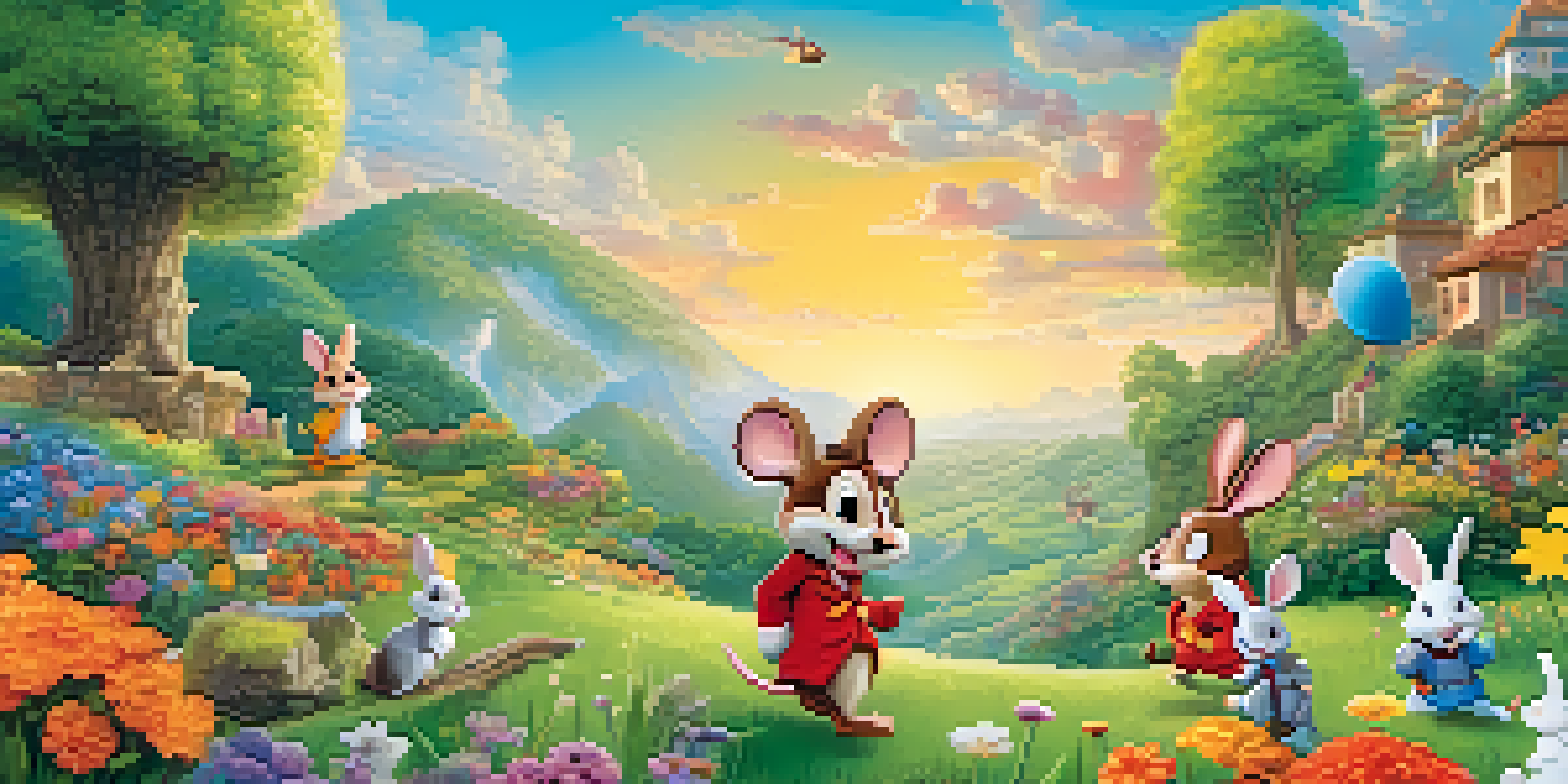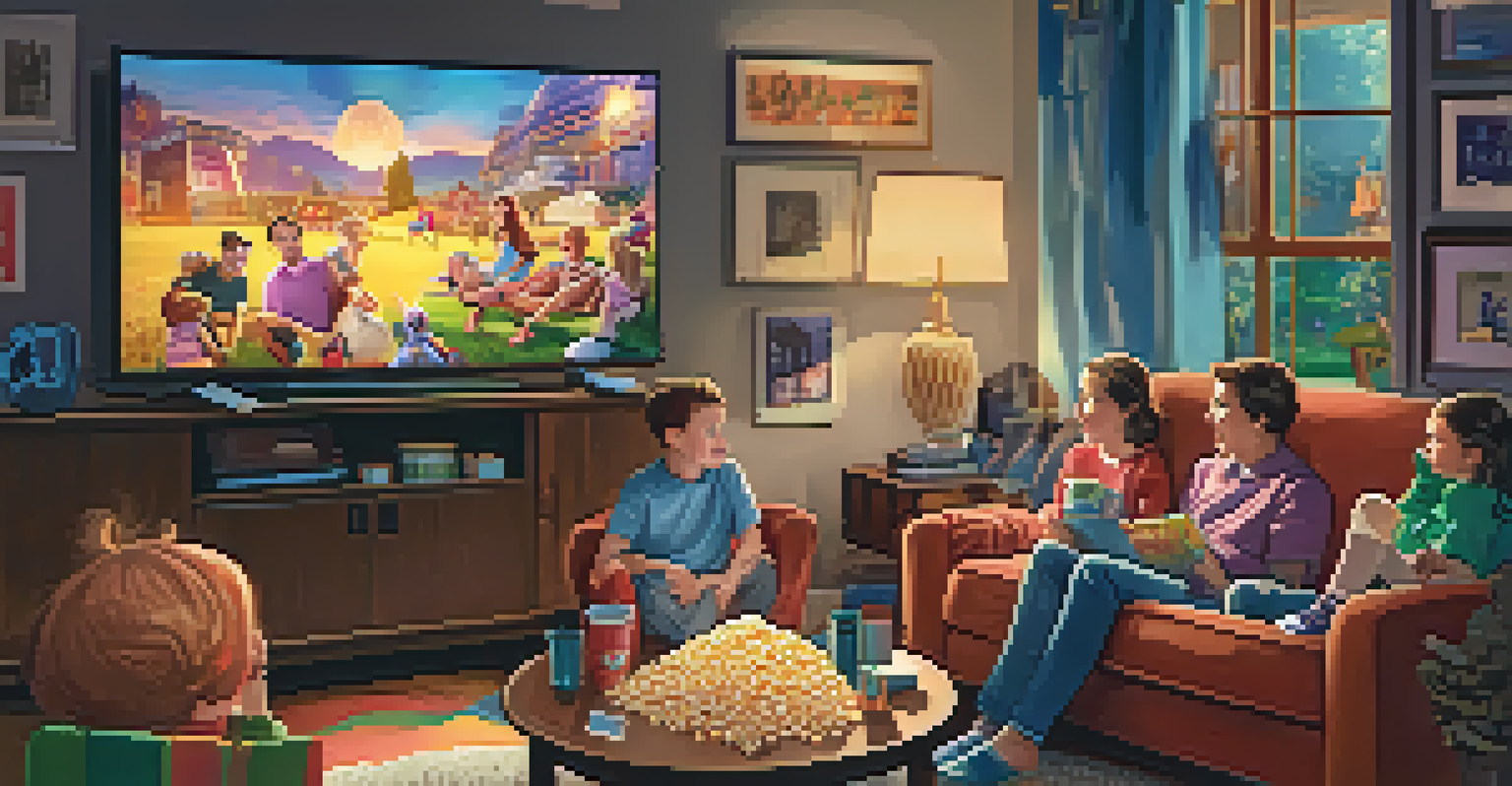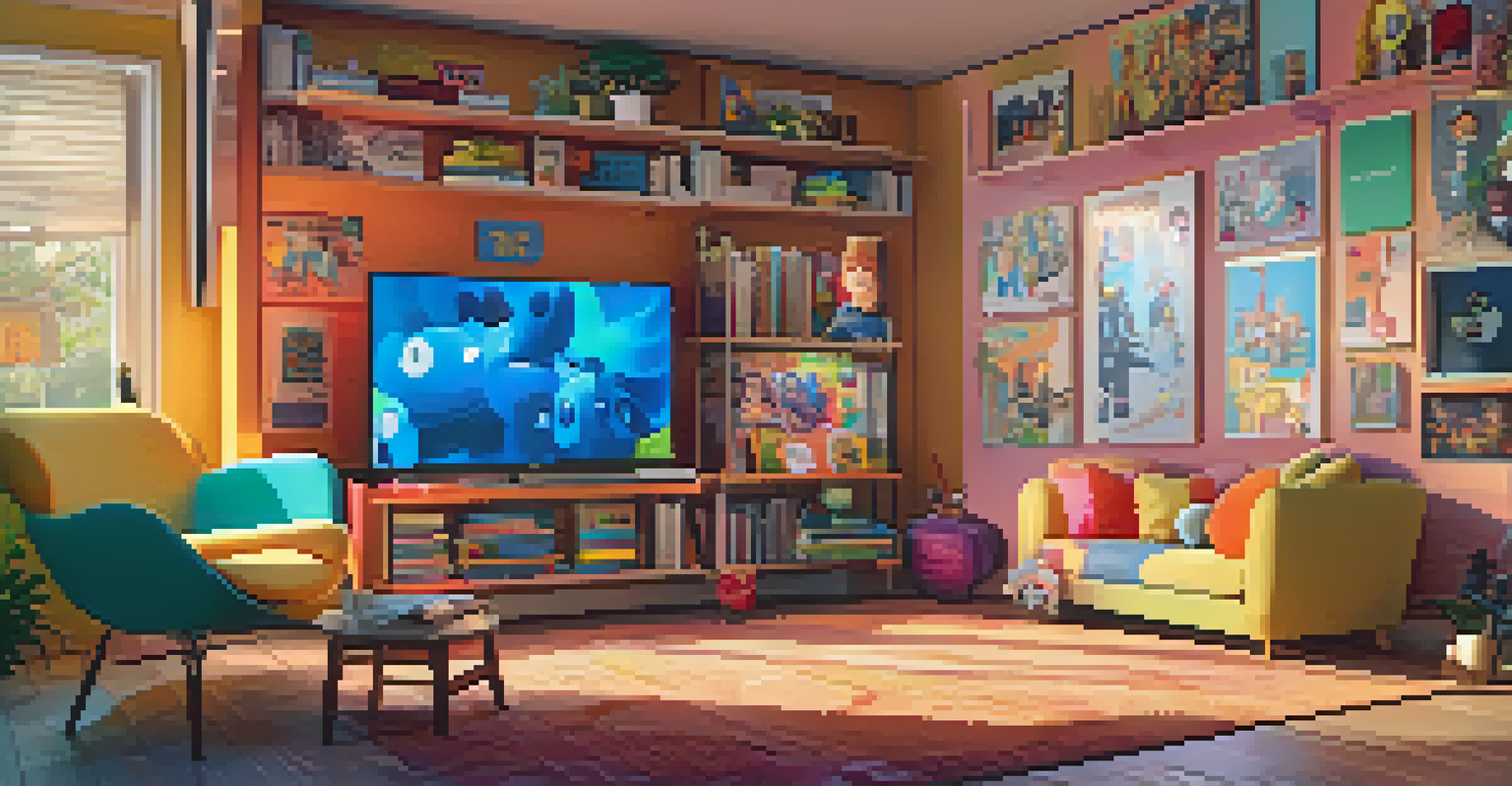Hollywood's Role in Defining Childhood Entertainment Trends

The Golden Age of Animation: A New Era for Kids
In the early days of Hollywood, animation took center stage with iconic characters like Mickey Mouse and Bugs Bunny. These animated films captured the hearts of children and set a precedent for what entertainment could be. With their vibrant colors and catchy tunes, these characters became not just figures on screen but cultural icons.
Animation can explain whatever the mind of man can conceive.
As animation evolved, it laid the groundwork for future children's programming, introducing storytelling techniques that resonated with young audiences. This era sparked a fervor for animated series, leading to beloved shows like 'Scooby-Doo' and 'The Jetsons.' Parents began to see the value in animation as a tool for creativity and learning.
The lasting impact of this golden age can still be felt today, as animation remains a cornerstone of childhood entertainment. Movies like 'Toy Story' and 'Frozen' continue to draw from the rich history of animated storytelling. Thus, Hollywood's early foray into animation not only entertained but also shaped children's expectations for engaging narratives.
The Rise of Live-Action Films and Their Impact
As the film industry transitioned to more live-action content, a new wave of childhood entertainment emerged. Movies like 'The Wizard of Oz' and 'Mary Poppins' brought stories to life in ways that animated films could not. These films featured relatable characters and magical adventures, making them a staple in family movie nights.

Live-action films also paved the way for franchises that became synonymous with childhood. Think 'Harry Potter' and 'The Chronicles of Narnia,' which not only entertained but also encouraged a love for reading among young audiences. The blend of fantasy and reality in these films allowed children to explore their imaginations while rooting for heroes they could relate to.
Animation's Lasting Impact on Kids
Animation has evolved from iconic characters to a vital storytelling medium that shapes children's entertainment expectations.
The influence of live-action films extends beyond the screen; they inspire merchandise, theme parks, and even educational content. Today's youth are often introduced to these stories through various media, from books to video games, creating a multi-faceted entertainment experience. Hollywood's ability to adapt stories into live-action formats keeps childhood entertainment fresh and exciting.
Television: A Game Changer for Children's Content
The advent of television revolutionized how children consumed entertainment. With Saturday morning cartoons and after-school specials, kids had access to a continuous stream of content tailored just for them. Shows like 'Sesame Street' transformed entertainment into an educational experience, teaching children valuable lessons through engaging stories and characters.
The greatest gift you can give your children is your time.
Television also provided a platform for diverse storytelling, showcasing different cultures and perspectives. Programs like 'Mister Rogers' Neighborhood' emphasized kindness and understanding, further shaping the values imparted to children. These shows became more than just entertainment; they were instrumental in teaching social skills and emotional intelligence.
As technology evolved, so did children's programming, with streaming services now offering a multitude of options. This shift has made it easier for kids to find content that resonates with them personally. Hollywood's role in creating and distributing this television content continues to play a crucial part in defining what childhood entertainment looks like today.
The Importance of Merchandise in Shaping Trends
Hollywood's influence extends beyond films and TV shows into the world of merchandise, which plays a significant role in shaping childhood entertainment trends. From action figures to clothing lines, children often want to own a piece of their favorite characters. This merchandising phenomenon not only enhances the viewing experience but also creates a sense of connection between kids and their beloved franchises.
Merchandise serves as a way for children to express their preferences and identities. When a child wears a 'Frozen' T-shirt or plays with 'Star Wars' toys, they become part of a larger community of fans. This sense of belonging can be hugely impactful during formative years, influencing social interactions and friendships.
Live-Action Films Enrich Childhood
Live-action films create relatable narratives that inspire imagination and promote a love for reading among young audiences.
Moreover, the success of merchandise often drives Hollywood to create more content. If a particular film or character generates significant sales, studios may greenlight sequels, spin-offs, or new series. Thus, the cycle of entertainment and merchandise is interlinked, with Hollywood continuing to adapt to what resonates with young audiences.
Diversity and Representation in Modern Entertainment
In recent years, Hollywood has made strides toward greater diversity and representation in children's entertainment. Films like 'Moana' and 'Coco' celebrate different cultures while featuring strong, relatable characters. This shift not only entertains but also educates children about the richness of various traditions and histories.
Representation matters because it allows children from diverse backgrounds to see themselves reflected on screen. When kids can identify with a character, it fosters a sense of validation and belonging. Moreover, it encourages empathy among viewers who may not share the same background, enriching their understanding of the world around them.
As families become more conscious of the media their children consume, Hollywood's responsibility to create inclusive content has never been more paramount. The ongoing push for diversity ensures that all children can find narratives that resonate with them, shaping their experiences and perspectives as they grow.
The Role of Streaming Services in Shaping Trends
With the rise of streaming services like Netflix and Disney+, the landscape of children's entertainment has transformed significantly. Kids can now watch their favorite shows and movies on demand, allowing for personalized viewing experiences. This shift has led to an explosion of content tailored specifically for young audiences, ranging from original series to classic films.
Streaming platforms often encourage binge-watching, changing how children engage with stories. Instead of waiting for a new episode each week, kids can immerse themselves in entire seasons. This availability not only deepens their connection to characters but also fosters discussions among peers about plot lines and character development.
Streaming Services Transform Viewing
The rise of streaming platforms has personalized children's entertainment, enabling on-demand access to diverse and inclusive content.
Furthermore, streaming services are actively investing in diverse and inclusive content, reflecting the values of today’s families. By prioritizing representation, these platforms are shaping the future of childhood entertainment, ensuring that every child can find something that speaks to them. Hollywood's relationship with streaming services continues to evolve, impacting how stories are told and consumed.
The Future of Childhood Entertainment in Hollywood
As we look to the future, the role of Hollywood in shaping childhood entertainment trends appears more vital than ever. Emerging technologies, like virtual reality and augmented reality, promise to redefine how children experience stories. Imagine exploring magical worlds in VR or interacting with characters in new and exciting ways—this is quickly becoming a reality.
Additionally, the focus on mental health and well-being in children's programming is gaining traction. Hollywood is increasingly aware of its influence, producing content that promotes positive messages about self-esteem, resilience, and emotional health. This shift aims to equip children with the tools they need to navigate the complexities of growing up.

Ultimately, Hollywood's commitment to innovation and inclusivity will continue to shape the future of childhood entertainment. By listening to the voices of young audiences and adapting to their needs, the industry can create meaningful experiences that will resonate for generations to come. The journey of childhood entertainment is far from over, and Hollywood plays a crucial role in guiding it.